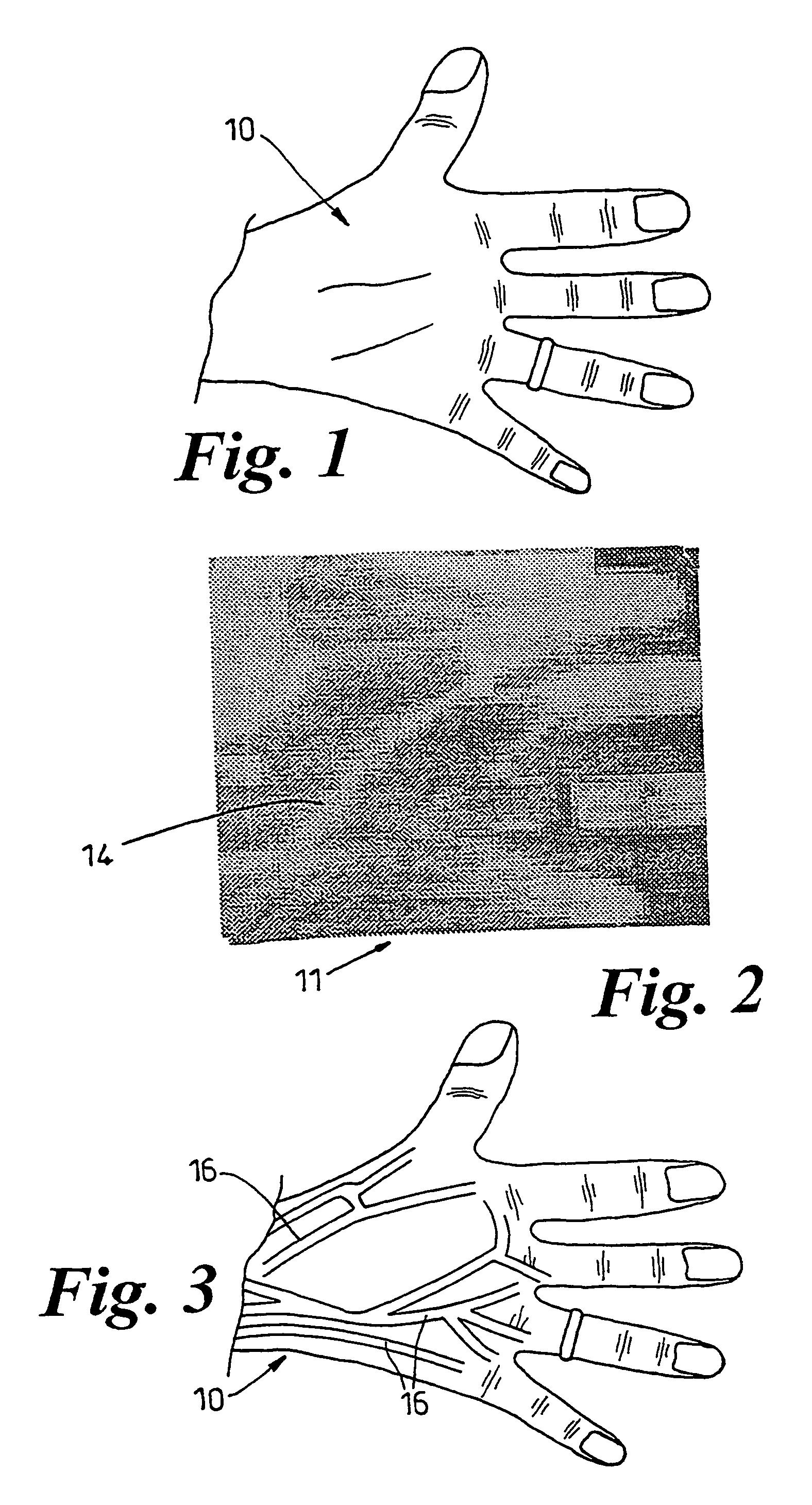Illumination and imaging devices and methods
- Summary
- Abstract
- Description
- Claims
- Application Information
AI Technical Summary
Benefits of technology
Problems solved by technology
Method used
Image
Examples
Embodiment Construction
[0083]FIG. 1 shows a person's hand. It is difficult to see their veins. This can make it difficult to introduce a needle into a vein in the back of their hand.
[0084]FIG. 2 shows an infrared image 11 obtained by a thermal torch 12 of the hand 10. The veins, because they are warmer than the remainder of the back of the hand, show up as white / pale lines 14. It will be appreciated from what follows that the image 11 is not shown to the user of the torch 12 on a screen and may only exist within its torch as data / signals.
[0085]FIG. 3 shows the person hand 10 as seen by the user of a thermal torch 12 (shown in FIGS. 4 and 5). Lines 16 of white light are projected onto the hand 10 overlying the veins as detailed in the thermal image 11. The user can therefore take the torch 12, shine it on a patient's hand and see using their normal eyesight where the veins are because the torch picks them out in visible light. The torch could, of course, pick the veins out in blue, or red, or another non-w...
PUM
 Login to View More
Login to View More Abstract
Description
Claims
Application Information
 Login to View More
Login to View More - R&D
- Intellectual Property
- Life Sciences
- Materials
- Tech Scout
- Unparalleled Data Quality
- Higher Quality Content
- 60% Fewer Hallucinations
Browse by: Latest US Patents, China's latest patents, Technical Efficacy Thesaurus, Application Domain, Technology Topic, Popular Technical Reports.
© 2025 PatSnap. All rights reserved.Legal|Privacy policy|Modern Slavery Act Transparency Statement|Sitemap|About US| Contact US: help@patsnap.com



